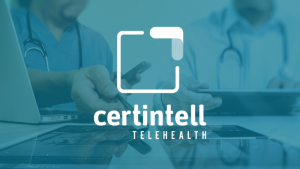Health Information Exchange is critical to not only your organization, but those you serve as well. Especially with the acceleration of patient-centered care workflows, HIE is indispensable to a well coordinated care team.
“The most notable example of such powerful-yet-neglected tools are Health Information Exchange (HIE) platforms,” states a Brookings Institute report exploring HIE’s benefits in 2021. “HIEs electronically retrieve, organize, and share medical data between clinical points of service, like doctors, hospitals, and specialty care providers (including mental health and telemedicine).”
Overall, HIE efforts, according to CMS standards, should target improved care for individuals, improved population health outcomes and lowered costs². Individual states should help facilitate this transition into value-based care, but health organizations can also start themselves on a local level and still get reimbursed for it. HIE works specifically well in programs such as Transitional Care Management (TCM), especially when combined with reimbursable digital health tools such as Remote Patient Monitoring (RPM). Even if your organization already has some start in HIE, here are some ideas on how to further your efforts.
Top-Notch Staff
The key to quality care programs is a well equipped team. Forming good HIE and a good care team should be a synchronized process— one cannot be built without the other. HIE has to be able to connect staff across distances and times and provide centralized access points to facilitate patient care. Staff members have to be able to use HIE appropriately and should maximize its capabilities in order to supply the best care.
The care team staff with access to HIE should also be diversified. This could include providers across different disciplines, as well as partners from community-based organizations. This allows care to be provided on a continuum, without administrative burdens and permissions road blocking at every turn.
Good HIE
HIE can be envisioned into three types: decentralized, centralized and hybrid.¹
Decentralized: Health records are stored in independent databases and each organization exercises control over the health records. These organizations grant permissions to health records only when needed or requested.
Centralized: Multiple health organizations, care team members or partners congregate health records and store in one centralized database, allowing all participants in that HIE access to health records.
A hybrid model combines the principles of the previous two models.
For patient-centered care, which is increasingly the standard in the health industry, centralized and hybrid models could best serve your team and more easily facilitate coordination.
The best kind of HIE is instantaneous. Care team members, which include the patient, should have easy access to health records and be able to share them without any hassle or lag time in waiting for request approvals.
Alert systems integrated into HIE are also impactful for care management, as the care team can then act quickly and appropriately to respond to the patient’s escalating health issue.
In fact, CMS introduced new regulations in 2020 in an effort to encourage adoption of HIE practices, which in sum includes adopting forward thinking and technology driven principles, as well as easy access points for health data.³
“The new guidelines represent clear progress, but they are still likely to be insufficient. Even if health care providers and health plans cooperate with HIE initiatives, effective HIE cannot occur without high-quality tools and processes for exchanging data,” says a Health Affairs article following HIE’s evolution.³
Although the biggest shift in HIE will need to come from state aid, if your organization is looking for a high-quality platform such as the one promoted above, Certintell’s proprietary system can be incorporated into workflows (Transitional Care Management, for example) that work in tandem with HIE data, our system includes a patient portal and health-data alert system all in one centralized location. This makes integrating the future of care into your practice simpler than ever.
Integration Into Care Management Services
The next natural step after introducing a sound HIE system into your organization’s workflow would be to extend it into services you can possibly get additional reimbursement for, while targeting HIE’s main goals.
RPM is a good stepping stone toward integrating the two. RPM can collect patient vitals on a routine basis. With the rights systems in place, those numbers can be sent automatically to providers and alert care teams when any major changes occur. All this information is also available to patients and a variety of care team members through a centralized portal, where care team members can exchange information and updates between each other, as well as to the patient.
The most impactful care management service to launch with HIE workflows would be Transitional Care Management (TCM). Through TCM, providers are able to guide recently-discharged patients, who obviously may not have had the best health before. They can support their transition from hospital to home through a variety of activities, including launching RPM and introducing telepharmacy workflows, sharing educational resources electronically and conducting telehealth visits. Through this strong communication network, readmissions can be more easily avoided, as everyone is informed. The care coordination in TCM fundamentally depends on a strong HIE network, and the advantages pay off with thousands of dollars in cost savings per patient.
How Certintell Can Help:
We can help your organization optimize care workflows with your local HIE, without having to do all the work yourselves. Our solutions specialize in connecting care teams and patients across boundaries. Through our HIPAA-compliant proprietary telehealth platform, with RPM and patient portal, better care is accessible with the click of a button. Our knowledgeable staff can provide assistance whenever needed. This can include the integration of our certified clinical health coaches who help guide patients through both the new technology and the health journey itself.
SOURCES:
¹ Holman, Tayla. “Health Information Exchange (HIE).” SearchHealthIT, 30 May 2018, searchhealthit.techtarget.com/definition/Health-information-exchange-HIE
² “Health Information Exchange | Medicaid.” Medicaid.Gov, www.medicaid.gov/medicaid/data-systems/health-information-exchange/index.html. Accessed 4 Apr. 2021
³ Hochman, Michael, et al. “Health Information Exchange After 10 Years: Time For A More Assertive, National Approach.” Health Affairs, 14 Aug. 2019, www.healthaffairs.org/do/10.1377/hblog20190807.475758/full.



